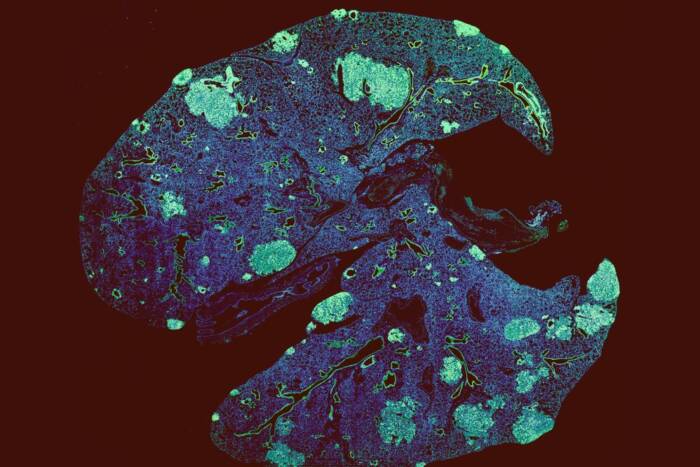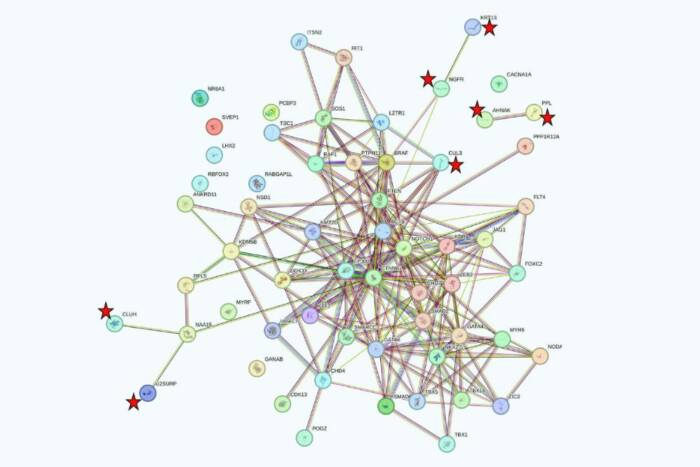Cornelia Bargmann receives Kavli Prize in Neuroscience
Cornelia Bargmann, Torsten N. Wiesel Professor and head of the Lulu and Anthony Wang Laboratory of Neural Circuits and Behavior, is the recipient of the 2012 Kavli Prize in Neuroscience, the Norwegian Academy of Science and Letters announced today. Bargmann, who is also an investigator at the Howard Hughes Medical Institute, is among the first women scientists to receive the prize, which was first awarded in 2008. She shares the prize with Winfried Denk of the Max Planck Institute for Medical Research and Ann M. Graybiel of Massachusetts Institute of Technology, which they received “for elucidating basic neuronal mechanisms underlying perception and decision.”
The Kavli Prize, which includes a $1 million prize, a scroll and a gold medal, will be presented to the laureates by Norway’s King Harald at an award ceremony in Oslo on September 4.
 The Kavli Prize in Neuroscience is awarded biennially for outstanding achievement in advancing our knowledge and understanding of the brain and nervous system, including molecular neuroscience, cellular neuroscience, systems neuroscience, neurogenetics, developmental neuroscience, cognitive neuroscience, computational neuroscience and related facets of the brain and nervous system.
The Kavli Prize in Neuroscience is awarded biennially for outstanding achievement in advancing our knowledge and understanding of the brain and nervous system, including molecular neuroscience, cellular neuroscience, systems neuroscience, neurogenetics, developmental neuroscience, cognitive neuroscience, computational neuroscience and related facets of the brain and nervous system.
Bargmann studies the relationships between genes, the nervous system and behaviors in the roundworm C. elegans, a powerful model system for the analysis of neural circuits. Her lab, which investigates how neural circuits develop, has identified genes and neural pathways for its actions and has determined how sensory inputs regulate those circuits. She and her colleagues have discovered how sensory inputs and genes regulate a network that controls solitary versus social feeding behaviors. Bargmann’s lab also provided the first evidence, in any animal, for the detailed neuronal pathway between a specific sensory receptor protein and behavior.
“Cori’s research on understanding the interaction between environment, experience, and the neural circuits involved in the C. elegans olfactory system have illuminated, in exquisite detail, some of the fundamental relationships between genes and behavior,” says Marc Tessier-Lavigne, president of Rockefeller. “I am pleased that Cori’s path-breaking work has been recognized with this prestigious award.”
C. elegans has a very simple nervous system that consists of just 302 neurons with reproducible functions, morphologies and synaptic connections. Despite this simplicity, many of the genes and signaling mechanisms used in the roundworm’s nervous system are similar to those of mammals. The ability to manipulate the activity of individual genes and neurons in C. elegans makes it possible to determine how neural circuits develop and function.
Some of the most complex behaviors in C. elegans occur in response to smell, and these are at the heart of the Bargmann lab’s research. The tiny worm can sense hundreds of different odors, discriminate among them and generate reactions that are appropriate to the odor cue. Since its nervous system is so simple, it’s possible for researchers to determine how individual neurons contribute to these behaviors. In C. elegans, as in other animals, odors are detected by so-called G-protein-coupled odorant receptors on specialized sensory neurons. The odors that activate one sensory neuron regulate a behavioral output such as attraction or avoidance. Bargmann’s lab studies the pathways from sensory input to behavioral output by quantitative analysis of behavior under well-defined conditions, genetic manipulation of individual neuronal cells, calcium imaging from neurons in living animals, and forward and reverse genetic approaches.
Bargmann is also investigating how much flexibility is present in a simple nervous system. For example, C. elegans is capable of learning the odors of different bacteria and avoiding those that previously made them ill. These learned olfactory behaviors are associated with neurochemical changes that lead to rapid behavioral remodeling. Another interest of the Bargmann laboratory is how genetic variation between individuals can cause them to behave differently from one another. In C. elegans, a single gene determines whether animals prefer to eat alone or in social groups. This gene encodes a neuropeptide receptor, a modulator that integrates multiple sensory inputs to generate coordinated behaviors. A current focus of Bargmann’s research is on learning how modulatory systems, like this neuropeptide receptor, affect the flow of information between neurons.
Bargmann received her undergraduate degree in biochemistry from the University of Georgia. She received her Ph.D. in 1987 from the Massachusetts Institute of Technology, where she worked under Robert A. Weinberg at the Whitehead Institute for Biomedical Research. She did postdoctoral studies with H. Robert Horvitz, also at MIT, until 1991, when she accepted a faculty position at the University of California, San Francisco. She remained there until 2004, when she joined Rockefeller as the Torsten N. Wiesel Professor. Bargmann also is codirector of the Shelby White and Leon Levy Center for Mind, Brain and Behavior. She has been an investigator at the Howard Hughes Medical Institute since 1995.
Bargmann is a member of the American Philosophical Society, the National Academy of Sciences and the American Academy of Arts and Sciences. She is an associate member of the European Molecular Biology Organization.
In addition to the Kavli Prize, Bargmann has received the 12th DART/NYU Achievement Award in Basic Biotechnology in 2012, the 11th Perl–UNC Neuroscience Prize in 2011, the 2009 Richard Lounsbery Award from the U.S. and French National Academies of Sciences, the 2004 Dargut and Milena Kemali International Prize for Research in the Field of Basic and Clinical Neurosciences and the Charles Judson Herrick Award for comparative neurology in 2000. She was awarded the Takasago Award for olfaction research and the W. Alden Spencer Award for neuroscience research, both in 1997.
The Kavli Prize, a partnership between The Norwegian Academy of Science and Letters, The Kavli Foundation and The Norwegian Ministry of Education and Research, was established in 2005 to recognize outstanding scientific research and honor highly creative scientists in three research areas: astrophysics, nanoscience and neuroscience.


